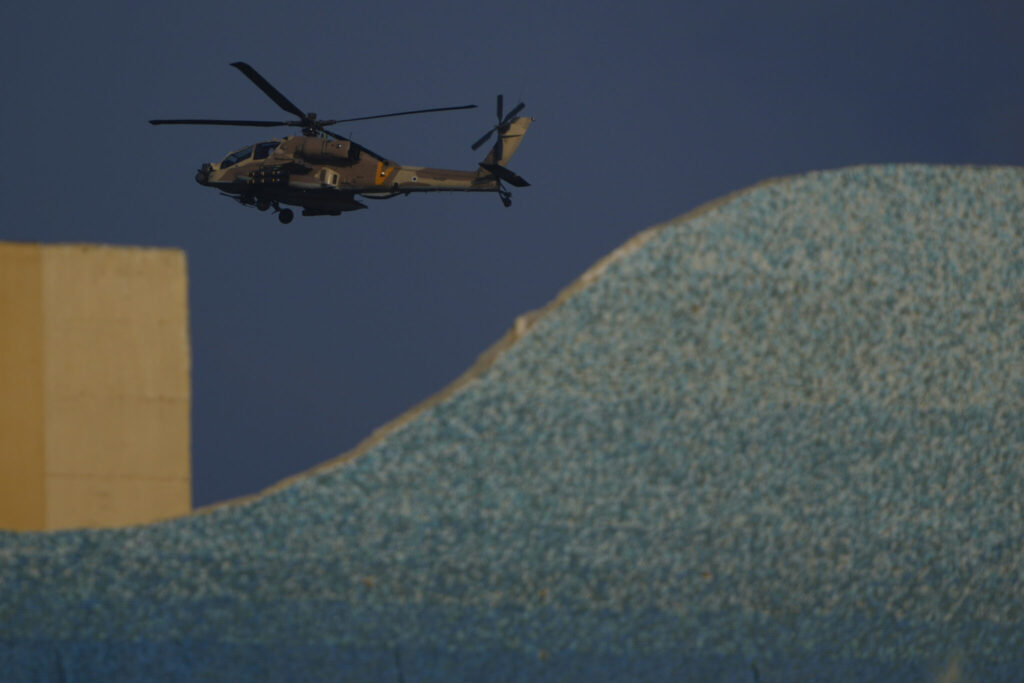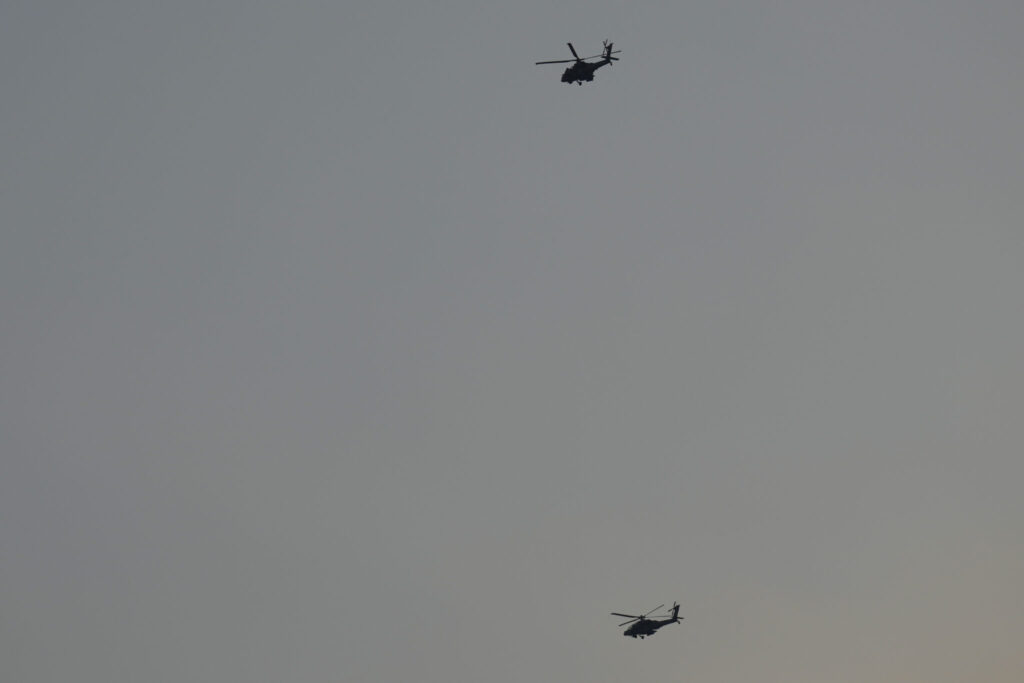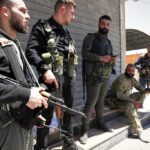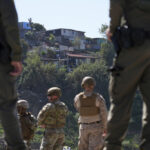Israel and Lebanon’s Hezbollah on Sunday launched their heaviest exchange of fire after months of strikes and counterstrikes, raising fears of an all-out war that could potentially draw in the United States, Iran and militant groups across the region.
Quick Read
- Israel and Hezbollah engaged in their heaviest exchange of fire on Sunday, raising concerns about a potential all-out war involving the United States, Iran, and other regional militant groups.
- The conflict was triggered by Hezbollah’s retaliation for an Israeli airstrike that killed one of its top commanders, with both sides targeting military installations; three people were killed in Lebanon, while Israel reported minimal damage.
- Despite the intense exchange, both sides may step back from further escalation, although tensions remain high along the border.
- A full-scale war could be devastating, with Hezbollah’s vast arsenal threatening all parts of Israel and Israel promising a crushing response that could severely impact Lebanon.
- Such a conflict could potentially draw in other regional powers, with Iran backing Hezbollah and the U.S. showing strong support for Israel, increasing the risk of a wider regional war.
- The escalation complicates ongoing efforts by the U.S., Egypt, and Qatar to broker a cease-fire in Gaza, as Hezbollah has indicated it might halt attacks if a cease-fire is achieved, but the situation remains uncertain.
The Associated Press has the story:
What to know about the heavy exchange of fire between Israel & Hezbollah
Newslooks- (AP)
Israel and Lebanon’s Hezbollah on Sunday launched their heaviest exchange of fire after months of strikes and counterstrikes, raising fears of an all-out war that could potentially draw in the United States, Iran and militant groups across the region.
By mid-morning, it appeared the exchange of fire had ended, with both sides saying they had only aimed at military targets. Lebanese authorities said the Israeli strikes killed three people, while there were no reports of casualties on the Israeli side. The situation remained tense.
Here’s a look at where things stand:
What happened early Sunday?
Israel says around 100 warplanes launched airstrikes targeting thousands of rocket launchers across southern Lebanon to thwart an imminent Hezbollah attack. Hezbollah then said it launched hundreds of rockets and drones aimed at military bases and missile defense positions in northern Israel and the Israeli-annexed Golan Heights.
Hezbollah called the attack an initial response to the targeted killing of one of its founding members and top commanders, Fouad Shukur, in an Israeli airstrike in Beirut last month. It said the first stage of the attack, which would allow it to launch assaults deeper into Israel, was completed. It also said its military operations Sunday were concluded. It denied Israel’s claims to have thwarted the attack.

At least three people were killed, including a fighter with the Hezbollah-allied Amal group, and two were wounded in the strikes on Lebanon. Lt. Col. Nadav Shoshani, an Israeli military spokesman, said an initial assessment showed “very little damage” in Israel.
Is this the start of an all-out war between Israel and Hezbollah?
The exchange of fire does not appear to have set off a long-feared war, but tensions remain high.
Hezbollah began firing rockets and drones at Israel shortly after the outbreak of the war in Gaza, which was triggered by Hamas’ surprise attack into Israel on Oct. 7. Hezbollah and Hamas are allies, each backed by Iran, and Hezbollah has portrayed the attacks as an act of solidarity with the Palestinians. Israel has responded with airstrikes, and the near-daily exchanges have escalated in recent months.
More than 500 people have been killed in Lebanon by Israeli strikes since Oct. 8, most of them fighters with Hezbollah and other armed groups but also more than 100 civilians and noncombatants. In northern Israel, 23 soldiers and 26 civilians have been killed by strikes from Lebanon. Tens of thousands of people have been displaced on both sides of the tense frontier.
Israel has vowed to bring quiet to the border to allow its citizens to return to their homes. It says it prefers to resolve the issue diplomatically through U.S. and other mediators but will use force if necessary. Hezbollah officials have said the group does not seek a wider war but is prepared for one.
Both sides have until now been careful to avoid actions that might trigger all-out war, and they may back down after Sunday’s exchange.
What would a war between Israel and Hezbollah look like?
Israel and Hezbollah fought to a stalemate a monthlong war to in 2006 that left much of southern Beirut and southern Lebanon in ruins, and drove hundreds of thousands of people from their homes on both sides.
Everyone expects the next war to be far worse.
Hezbollah has an estimated 150,000 rockets and is capable of hitting all parts of Israel. It has also developed an increasingly sophisticated fleet of drones and has been experimenting with precision-guided missiles. A full-scale war could force hundreds of thousands of Israelis to flee, paralyze the Israeli economy and force the army, which is still engaged in Gaza, to fight on two fronts.
Israel has vowed a crushing response to any major Hezbollah attack that would likely devastate Lebanon’s civilian infrastructure and economy, which has been mired in crisis for years. Beirut’s southern suburbs, and towns and villages across southern Lebanon, where Hezbollah’s main strongholds are located, would likely be flattened.
An Israeli ground invasion to root out Hezbollah could drag on for years. The militant group is far more advanced and better-armed than Hamas in Gaza, which is still putting up a fight after 10 months of intense Israeli bombardment and ground maneuvers.
Would a war draw in the United States, Iran and others?
An all-out war between Israel and Hezbollah could spiral into a region-wide conflict.
Iran is a patron of Hezbollah, Hamas and other militant groups in Syria, Iraq and Yemen. Iran has vowed to carry out its own retaliatory strike over the killing of Hamas’ top leader, Ismail Haniyeh, in a blast in its capital last month that was widely blamed on Israel. Israel has not said whether it was involved.
Iran-backed groups across the region have repeatedly attacked Israeli, U.S. and international targets since the start of the war in Gaza and could ramp them up in a bid to take pressure off Hezbollah.
The United States, meanwhile, has pledged ironclad support for Israel and moved a vast array of military assets, including the USS Abraham Lincoln aircraft carrier strike group, to the region in recent weeks to try and deter any retaliatory strike by Iran or Hezbollah.
A U.S.-led coalition helped shoot down hundreds of missiles and drones fired by Iran toward Israel in April in response to an apparent Israeli strike in Syria that killed two Iranian generals. Both sides downplayed an apparent Israeli counterstrike on Iran, and tensions gradually subsided.
What impact would a war have on Gaza cease-fire efforts?
The United States, Egypt and Qatar have spent months trying to broker an agreement for a cease-fire in Gaza and the release of scores of hostages held by Hamas. Those efforts have gained urgency in recent weeks, as diplomats view such a deal as the best hope for lowering regional tensions.
Hezbollah has said it will halt its attacks along the border if there is a cease-fire in Gaza. It’s unclear whether Hezbollah or Iran would halt or scale back their threatened retaliatory strikes over the killing of Shukur and Haniyeh, but neither wants to be seen as the spoiler of any cease-fire deal.
Despite the intense diplomacy, major gaps remain, including Israel’s demand for a lasting presence along two strategic corridors in Gaza, a demand rejected by Hamas and Egypt. High-level talks will be held in Egypt on Sunday.







